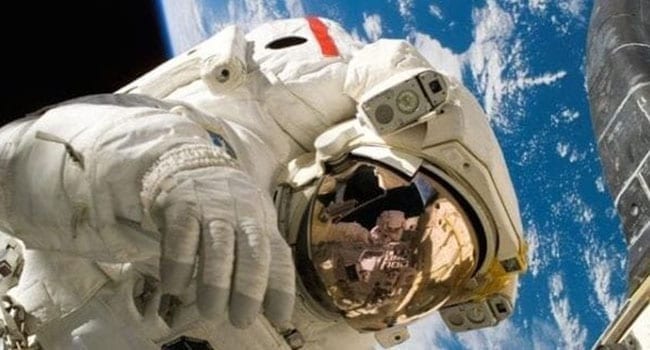 For decades, researchers have studied the effects of reduced physical activity on astronauts during prolonged journeys to space. But what’s surprising is one of the uses of that research.
For decades, researchers have studied the effects of reduced physical activity on astronauts during prolonged journeys to space. But what’s surprising is one of the uses of that research.
It turns out that understanding the effects of space travel on the body may be important to understanding what happens to us on Earth as we get older. And the reverse is also true: studying frailty in aging seniors has much to offer space travel.
A novel partnership between the Canadian Space Agency, the Canadian Institutes of Health Research and the Canadian Frailty Network is examining the health impact of inactivity both on older adults and astronauts. It’s a world first.
On space missions, astronauts, like Canada’s Chris Hadfield, may spend months in a zero-gravity, weightless environment. One cosmonaut, Russia’s Valery Polyakov, spent 438 days in space, but even brief journeys into space may have significant health consequences. Surprisingly, research on these effects is often conducted using prolonged bed rest in humans on Earth.
Floating in space looks innocuous, even peaceful. But the health impacts of weightlessness are similar to those found in people who are inactive here on the ground, which results in rapid muscle and bone weakening. Other consequences of weightlessness mimic what we see in older adults living with frailty: hardening of the arteries, retention of fluid, loss of bone density or osteoporosis, among others.
In Canada, the most rapidly increasing segment of the population is individuals over 80 years old – of whom over half are frail. As a result, a large and growing proportion of our health and social care spending goes toward older Canadians living with frailty.
Frailty can occur at any age, though it most often occurs in seniors, and describes those with precarious health who are at heightened risk of dying. For those with frailty, illnesses – like minor infections or injuries – may result in rapid deterioration in health.
The goal of the research partnership is to help identify ways to better detect frailty to improve outcomes or reduce the severity of frailty in older adults.
The new partnership builds on previous inactivity studies and will also help highlight the hazards of inactivity and bedrest. Bedrest or inactivity continues to be common in acutely ill patients and those in long-term care, whether by prescription, by health-care professionals, by institutional design or lack of understanding regarding the need for activity by the human body.
There are some notable differences in the space-frailty comparison, however. Although the effects of bedrest are reversible in younger volunteers and astronauts with intensive therapy, they may not be in older individuals, where short periods of bedrest may convert someone who is independent to functionally dependent.
Other research has included looking at how low-gravity environments affect the onset of osteoarthritis, a common condition among Canadian seniors. Osteoarthritis also happens to be a common condition for astronauts once they return to Earth. There has also been research studying cardiovascular health and an aging population by looking at the lifestyle of astronauts. Research has shown that increased carotid artery stiffness occurs in astronauts in a span of months, which is equivalent to changes seen in 20 years of aging.
Importantly, results yielded by this partnership will be shared internationally with other researchers and space organizations to enable the collaborative efforts necessary to solve the complex problems posed by aging and space flight.
Although we don’t usually associate aging and space travel, the space exposure of astronauts is informative and offers accelerated models for studying the effects of aging on the ground. With nearly six decades of human spaceflight history, space agencies have a wealth of data to inform life sciences research on frailty.
Pooling knowledge and resources may help us develop innovative approaches to the problems posed by both aging and prolonged space flights.
Dr. John Muscedere is the scientific director and CEO of the Canadian Frailty Network, a professor of Critical Care Medicine at Queen’s University and an intensivist at Kingston General Hospital.
John is a Troy Media Thought Leader. Why aren’t you?
The views, opinions and positions expressed by columnists and contributors are the author’s alone. They do not inherently or expressly reflect the views, opinions and/or positions of our publication.


